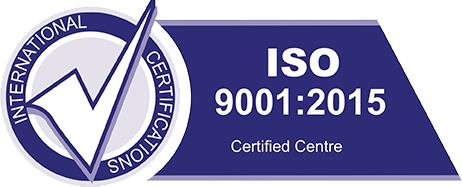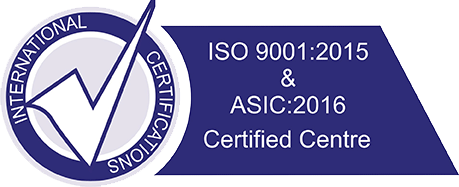Exclusive breastfeeding is recommended for the first 6 months of a baby’s life. Breastfeeding should continue up to the baby’s first birthday as new foods are introduced. You can keep breastfeeding after the baby’s first birthday for as long as you and your baby would like.
Breastfeeding is best for your baby for the following reasons:
- Breast milk has the right amount of fat, sugar, water, protein, and minerals needed for a baby’s growth and development. As your baby grows, your breast milk changes to adapt to the baby’s changing nutritional needs.
- Breast milk is easier to digest than formula.
- Breast milk contains antibodies that protect infants from certain illnesses, such as ear infections, diarrhea, respiratory illnesses, and allergies. The longer your baby breastfeeds, the greater the health benefits.
Breastfeeding is good for you for the following reasons:
- Breastfeeding triggers the release of a hormone called oxytocin that causes the uterus to contract. This helps the uterus return to its normal size more quickly and may decrease the amount of bleeding you have after giving birth.
- Breastfeeding may make it easier to lose the weight you gained during pregnancy.
- Breastfeeding may reduce the risk of breast cancer and ovarian cancer.
How soon should I start breastfeeding after childbirth?
Most healthy newborns are ready to breastfeed within the first hour after birth. Holding your baby directly against your bare skin (called "skin-to-skin" contact) right after birth helps encourage him or her to start breastfeeding.
You also should ask about "rooming-in," which means having your baby stay in your room with you instead of in the hospital nursery. Having your baby nearby makes it easier to breastfeed while you are still in the hospital.
How do I get my baby to latch on to my breast?
Holding your baby directly against your bare skin right after birth triggers reflexes that help the baby to attach or “latch on” to your breast. Cup your breast in your hand and stroke your baby’s lower lip with your nipple. The baby will open his or her mouth wide, like a yawn. Pull the baby close to you, aiming the nipple toward the roof of the baby’s mouth. Remember to bring your baby to your breast—not your breast to your baby.
How can I tell if my baby is hungry?
When babies are hungry, they look alert, bend their arms, close their fists, and bring their fingers to their mouths. Offer your baby your breast when he or she first starts bringing fingers to his or her mouth. Crying is a late sign of hunger, and an unhappy baby will find it harder to latch. When full, babies relax their arms and legs and close their eyes.
How often should I breastfeed my baby?
Let your baby set his or her own schedule. During the first weeks of life, most babies feed at least 8–12 times in 24 hours, or at least every 2–3 hours (timed from the start time of one feeding to the start time of the next feeding). Many newborns breastfeed for 10–15 minutes on each breast. But they also can nurse for much longer periods (sometimes 60–120 minutes at a time) or feed very frequently (every 30 minutes, which is called “cluster feeding”). When your baby releases one breast, offer the other. If your baby is not interested, plan to start on the other side for the next feeding.
What should I do if I am having trouble breastfeeding?
Breastfeeding is a natural process, but it can take some time for you and your baby to learn. Most women are able to breastfeed. A few women cannot breastfeed because of medical conditions or other problems.
Lots of breastfeeding help is available. Peer counselors, nurses, doctors, and certified lactation consultants can teach you what you need to know to get started. They also can give advice if you run into challenges.
What kinds of foods should I eat while breastfeeding?
The following tips will help you meet the nutritional goals needed for breastfeeding:
- Your body needs about 450–500 extra calories a day to make breast milk for your baby. If your weight is in the normal range, you need about 2,500 total calories per day.
- Eat fish and seafood 2–3 times a week, but avoid eating fish with high mercury levels. Do not eat shark, swordfish, king mackerel, or tilefish, and limit albacore tuna to 6 ounces a week. If you eat fish caught in local waters, check for advisories about mercury or other pollutants. If no information is available, limit your intake of such fish to 6 ounces a week, and do not eat any other fish that week.
- Your health care professional may recommend that you continue to take your prenatal multivitamin supplement while you are breastfeeding.
- Drink plenty of fluids, and drink more if your urine is dark yellow.
Can I drink caffeine while breastfeeding?
Drinking caffeine in moderate amounts (200 mg a day) most likely will not affect your baby. Newborns and preterm infants are more sensitive to caffeine’s effects. You may want to consume a lower amount of caffeine in the first few days after your baby is born or if your infant is preterm.
What birth control methods can I use while breastfeeding?
Many birth control methods are available that can be used while breastfeeding, including non-hormonal methods (copper intrauterine device (IUD), condoms, and diaphragms) and hormonal methods. There are some concerns that hormonal methods of birth control can affect milk supply, especially when you first start breastfeeding. If you start using a hormonal method and your milk supply decreases, talk with your obstetrician about other options for preventing pregnancy.
Tags: Breastfeeding and Lactation

